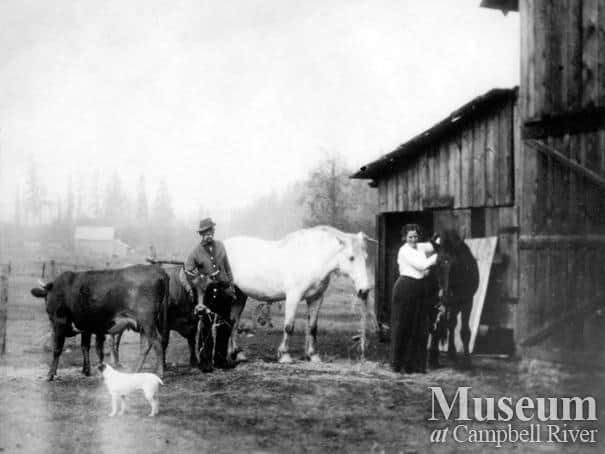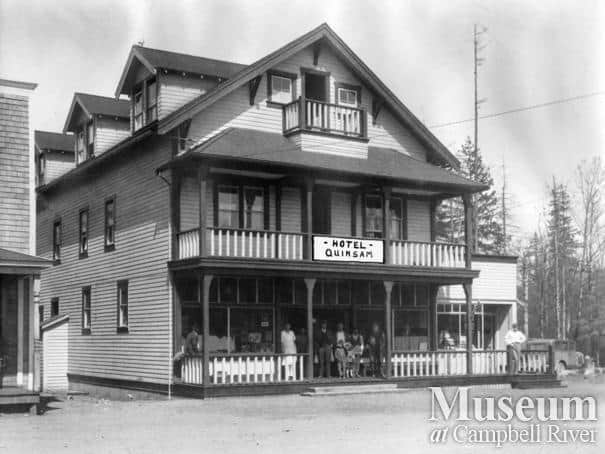For thousands of years, the estuary and floodplains of what is today called the Campbell River was used by the indigenous peoples who lived on the banks of the river. They installed elaborate fish weirs and traps, many that have been found today can be dated to over 1700 years of age. They hunted for deer, grouse and bear on the Quinsam Prairie, and harvested berries and other root vegetables. Their descendants continue to harvest traditional foods and live in this territory that is now called Campbell River.
When it comes to the different neighborhoods of today’s Campbell River, each has its own unique character. The reason that one area is so different from the others is because they all started out as completely separate communities. As the town of Campbell River grew in population it expanded to take up more space until one neighborhood spilled into the other.

The floodplains of the Campbell River began its journey to become known as ‘Campbellton’ in the late 1880s. In 1888 Fred Nunns took up a pre-emption along the river that encompassed nearly all of present day Campbellton. We know a lot about Fred and his experiences during this time because he kept a journal, a copy of which can be found in the Museum’s reference library. During these early days, Quathiaski Cove was the economic centre of the region, and Fred would row his produce and livestock to markets and butchers as far as Courtenay, and to the isolated logging camps that dotted the region. He allowed his livestock to range freely, which was not appreciated by his nearest neighbors, the Quocksister family. Fred would build fences, not to keep his livestock contained, but to keep them out of his vegetable gardens. He lost several animals to the ‘panthers’ still abundant in the area.
Aside from selling his produce and livestock, Fred earned his living by guiding visiting sportsmen hunting and fishing, as well as assisting the surveyor George Drabble. Fred was convinced that he would make his fortune on the mineral rights on his property. He was sure there were massive coal reserves to be found. And he wasn’t entirely mistaken, Quinsam Coal Mine operated nearby from 1988 to 2019.
For many years, Campbellton was a rural, farming community. The downtown area boasted a hotel with drinking parlour, a general store, and a bakery. As time marched on, the farms were divided, more businesses opened to service the growing population, and a bustling community centre provided a venue for events, classes, dances, sports and films.
- For those that like a task, find the answers to these trivia questions about the Campbellton: Campbellton Trivia Worksheet
- Campbellton Trivia Trek Map printable map
- Back to Trivia Trek Home


